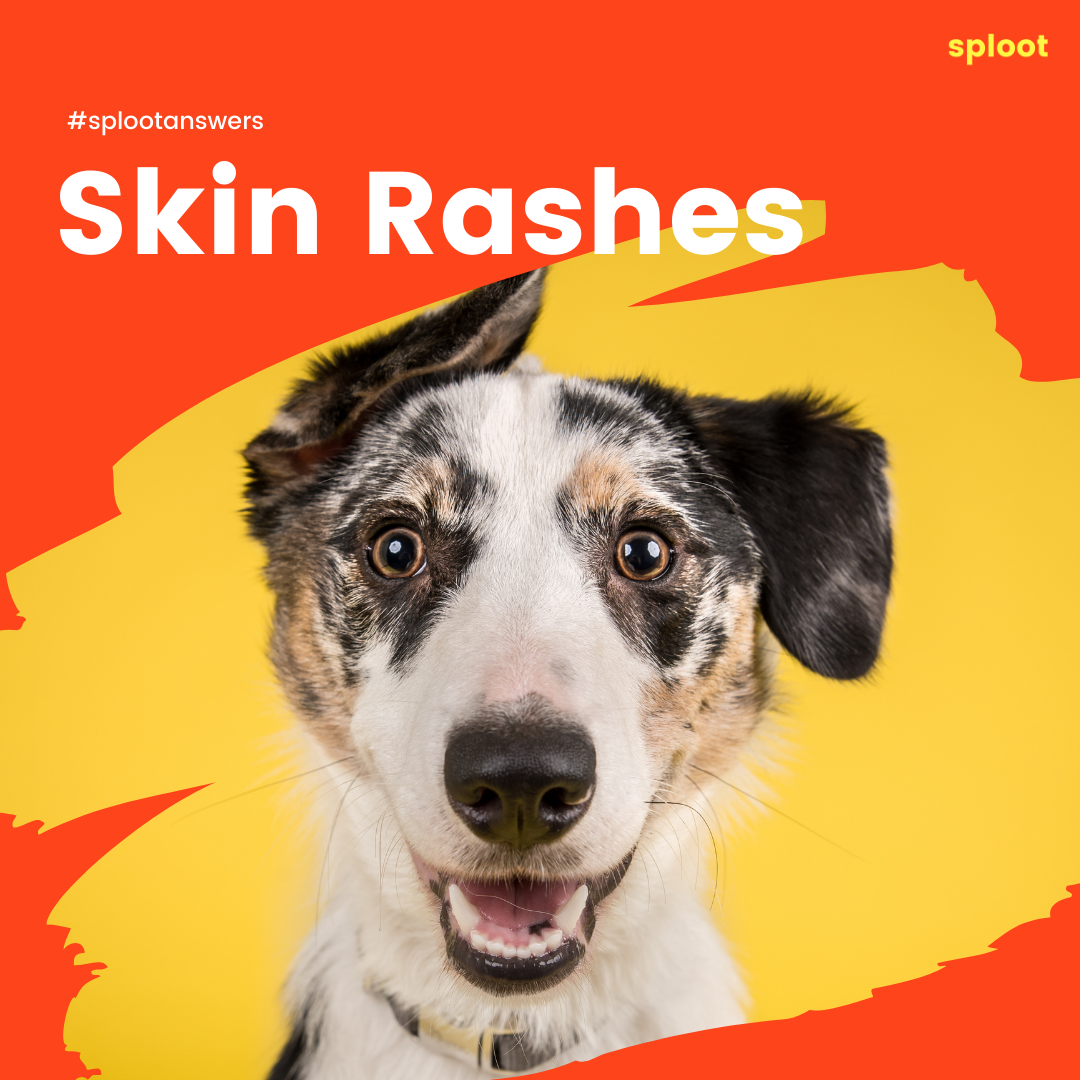Skin Rashes

Skin rashes or hives (urticaria) is a localized small, red, swollen, and itchy skin condition of your dog. They frequently develop because of certain allergic reactions. The swollen areas are commonly found in any place on the body, particularly in the face, lips, tongue, throat, and ears. The red bump (wheals) is about 5 mm to 20 cm in diameter. This condition can be itchy for your dog.
Luckily, maximum skin rash cases are self-limiting, which means they will eventually vanish without causing a significant threat to your dog. In this article, you’ll learn about how to identify the symptoms of skin rash in your dog and how will you identify possible causes, and what to do to get rid of it.

Why is my dog breaking out into hives?
These skin rashes are generally caused by the direct contact of allergens like insect bites, stings, toxic plants, chemicals, shampoos, or certain medications. Food allergies and vaccinations may also cause hives in your dog. Hives are most common in the short-haired breeds such as American Staffordshire Terrier, Anatolian Shepherd Dog, Basenji, Basset Hound, etc.

Other cause may include:
- Allergens from the environment such as pollen, dust, flea bite, etc.
- Adverse drug reaction
- Sunlight
- Exercise
- Heat and stress
- Breed
- Hereditary condition

It is very important to identify the signs and symptoms of an allergic reaction to treat your dog in a timely manner. Symptoms of hives in your dog may include:
- Localized small to a medium-sized area of redness and swelling on the face, lips, abdomen, and legs
- Dramatic swelling around the muzzle and eyes
- Itching
- Raised wheals or bumps in the affected area
- Difficulties in breathing, if swelling in thro at occurs
- Loss of hair due to excessive scratching
- Patchy skin, and
- Drooling of saliva, if muzzle was swollen

These symptoms may turn into a severe condition if left untreated for a prolonged time. Please keep in mind that since skin rashes are extremely itchy, your dog will continuously scratch his skin and end up injuring themselves.
How do I treat my dog’s skin rashes?
Usually, skin rashes disappear without treatment within a few hours. But if you don’t eliminate the cause, they will recur again. Hives are generally treated with a proper dose of antihistamines and rapid-acting corticosteroids. Additional supportive therapy can be given if needed. It usually takes a few minutes to hours for the dramatic recovery. In the case of chronic hives, you should consider environmental or food allergens as a possible cause. Typically, mortality will not occur in such a case, unless anaphylaxis occurs. This is a severe allergic condition that results in respiratory distress due to the swelling of the throat.

Prevention of hives is much easier than treatment. Currently, there is no vaccine available for this problem. You just have to avoid exposing your dogs to allergens that cause this reaction. If you see any symptoms of hives in your dog, don’t panic! Follow your vet’s advice for appropriate care.